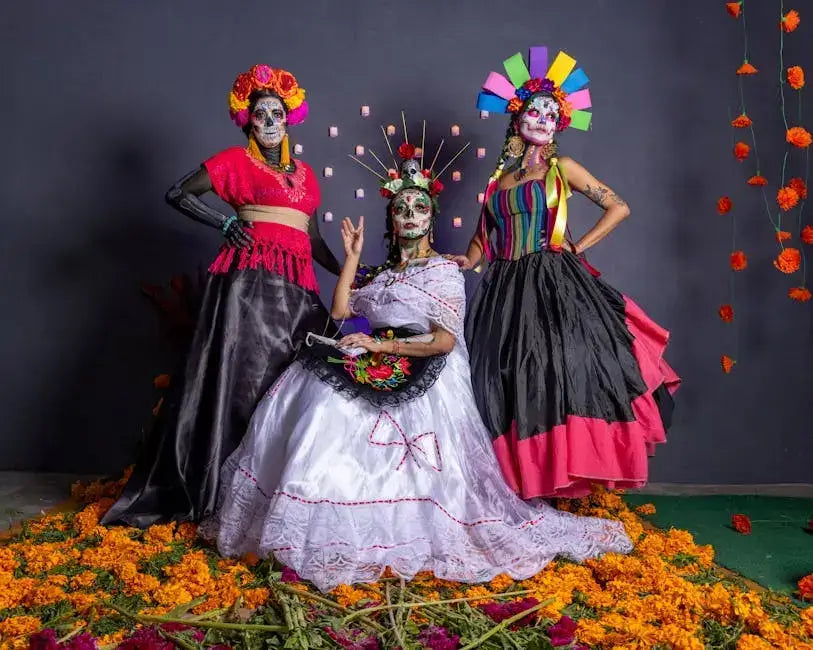
What Makes Hispanic Clothing Unique?
Share
Hispanic clothing is a vibrant representation of culture, identity, and history. This blog explores the distinct features that set Hispanic clothing apart, highlighting its rich textures, colorful patterns, and deep-rooted traditions.
Cultural Significance of Hispanic Clothing
Hispanic clothing serves as a profound reflection of the diverse cultures that exist within the Hispanic community. Each piece tells a story, often rooted in the traditional practices of local artisans. For instance, garments might be adorned with symbols that represent regional folklore, marrying fashion with storytelling.
What’s compelling about Hispanic clothing is its ability to convey identity and pride. Wearing traditional attire during festivals or family gatherings strengthens connections to history and heritage. These garments are not just clothes; they are legacies passed down through generations.
Moreover, many garments are associated with significant life events, serving as a rite of passage. From vibrant wedding dresses to richly embroidered quinceañera outfits, each piece of clothing plays a critical role in marking important milestones, celebrating life in its myriad forms.
Recognizing the cultural significance behind each piece invites a deeper appreciation of Hispanic clothing. It’s a gentle reminder that what we wear is often intertwined with our identities and personal histories.
Traditional Materials and Textiles
The beauty of Hispanic clothing begins with its materials. Traditionally, fabrics such as cotton, silk, and wool are commonly used, each selected for durability and comfort. These materials not only enhance the visual appeal but also reflect climate suitability across various regions.
Handwoven textiles, often produced on looms, are a hallmark of Hispanic culture. The intricate craftsmanship involved in creating these fabrics speaks volumes about the artistry inherent in making clothing. Each weave tells a story of time spent and skill honed over generations.
In addition to standard fabrics, the use of embellishments such as lace and embroidery adds unique characteristics to clothing. These elements are often meticulously detailed, showcasing the talent of artisans who pour their hearts into each creation.
Furthermore, natural dyes derived from plants not only enhance the aesthetic value but also reinforce the sustainable practices deeply rooted in Hispanic traditions. This reciprocity with nature is an integral part of the craft.
Vibrant Colors and Patterns
One of the most striking attributes of Hispanic clothing is the use of vibrant colors. Colors such as fiery reds, deep blues, and sunny yellows dominate many traditional garments, symbolizing various aspects of life ranging from joy to spirituality.
Patterns play an equally significant role, often reflecting regional influences. For instance, the geometric patterns of textiles from the Andean regions beautifully contrast with the floral motifs found in Mexican designs, showcasing the vast diversity within Hispanic clothing.
The integration of colors and patterns is not arbitrary; it often represents the wearer’s background or the occasion for which the clothing is worn. This intentionality adds layers of meaning, making each garment a visual language of sorts.
Ultimately, these vivid hues and intricate patterns excite the senses and serve as an interface to understanding the rich tapestry of Hispanic cultures that inspire them.
Influence of Regional Styles
Hispanic clothing is profoundly influenced by regional styles, with distinct characteristics emerging from different local cultures. For example, the charming designs of Mexican folk dress showcase not just beauty but also the vivid identity of the regions they represent.
In contrast, Andean clothing features heavy fabrics and layered styles suited for colder climates. These variations highlight how geography impacts not only what we wear but how clothing evolves over time.
Moreover, festivals and local traditions are pivotal in shaping regional styles. The garments worn during cultural festivities often embody vibrant expressions of community pride and heritage, connecting past and present in significant ways.
Modern Interpretations of Hispanic Clothing
In recent years, Hispanic clothing has seen a resurgence as contemporary designers draw upon traditional methods while innovating with modern silhouettes. This blending of old and new opens the door for a broader audience to appreciate the beauty and craftsmanship involved.
Today, many fashion houses are experimenting with traditional fabrics and motifs, creating styles that resonate in urban environments while honoring their roots. This merging of tradition with modern aesthetics makes Hispanic clothing relevant to a new generation.
Furthermore, this evolution showcases the adaptability of Hispanic clothing, allowing it to thrive in diverse contexts, from casual streetwear to high fashion runways. The ongoing dialogue between tradition and modernity ensures that Hispanic clothing maintains its significance while appealing to contemporary tastes.
The Enduring Charm of Hispanic Clothing
In summary, Hispanic clothing reflects a unique blend of cultural influences and artistic expression. Its significance goes beyond aesthetics, offering a glimpse into the heritage and stories that shape the community. Whether through traditional garments or contemporary designs, the uniqueness of Hispanic clothing continues to thrive.

